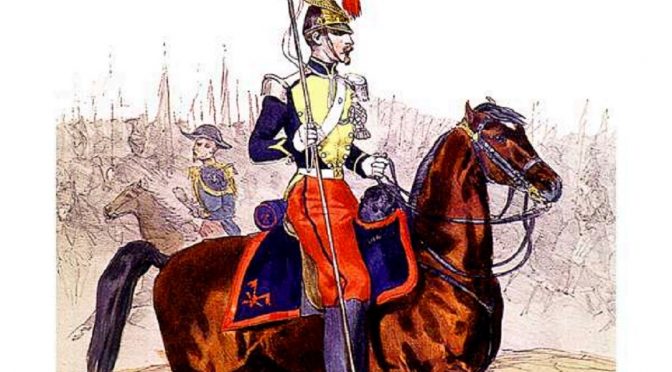Today we are starting a series of entries in which we will write a bit more about some of the sets that will be released in the first quarter of this year. Soon we will start their presale, which we will inform about in a separate entry.
And the heroes of today’s entry are lancers and uhlans. This type of cavalry is especially close to us because it is derived from Polish military tradition. Unlike the countries of Western Europe, from the 16th century cavalry lances were still used by various cavalry formations of the Polish-Lithuanian Commonwealth. The most famous of them were the hussars (Husaria), but lances were also used by other types of cavalry. This tradition lasted until the second half of the 18th century, when the old types of cavalry were replaced by so-called national cavalry, also armed with lances. In 1795, the Commonwealth lost its independence (Partitions of Poland), but the cavalry traditions survived. When Napoleon Bonaparte created the Duchy of Warsaw (and I beg you – never, never, never say “Grand Duchy”, there was “just” Duchy of Warsaw) uhlans were a large part of the cavalry of the Duchy’s army. In addition, lances were also used by Vistula lancers and, for some time, by cavalrymen – lancers of the guard. The successes of these formations prompted Napoleon to create lancer units in the French army. The uhlan units were also in Austrian, Prussian and Russian, armies, where large part of the recruits were Poles and Lithuanians from the provinces taken from the Commonwealth.
The lance armed units were very successful and become popular. Soon they were introduced introduced into other armies, such as the British one. The lancer outfit in most of the armies was based on the Polish national cavalry and the later uhlans of the Duchy of Warsaw. Its most characteristic element was the cap (czapka/rogatywka) (although some nations, for example the French, used helmets, but after the Napoleonic Wars they began to use the cap).
The Uhlans survived the end of the Napoleonic Wars. The lance turned out to be an effective weapon in the hands of a soldier who could use it. In hand-to-hand combat, it gave a range greater than any other melee weapon.In the mid-nineteenth century, lancers / uhlans were part of most European armies. Even some American cavalry units were armed with lances during the American Civil War.
Due to the similarity of these formations, we decided to create the so-called megapackage of uhlans. There will be separate sets of lancers for the following nations:
– Austria
– France
– Prussia
– Russia
– United Kingdom
– Italy
These will be separate sets, as the uniforms or horse tacks had slight but still noticeable differences. These sets should satisfy every fan of lancers. We hope you will like them.
In your opinion, was the lance still a useful weapon in the mid-19th century?
PS. According to the book by Piotr Borawski: The cavalry with the Uhlan traditions comes from the Mongols and Tatars, where oghlan or uhlan meant a youth, a junak. According to Piotr Borawski, the word uhlan was also a title for the aristocracy. The aristocracy related to the Genghis Khan family was called the Sołtan. From the end of the 14th century, representatives of these aristocratic families settled in the Grand Duchy of Lithuania, often keeping the same title. One of the branches of the Assańczukowicz family transformed this title into a surname – Ulan. The regiment of Alexander Ulan took the side of king August II during the civil war of 1715-1716, as a reward for loyalty in 1717 the monarch transferred the regiment from the royal service to pay in the Saxon army. After the death of Uhlan, the commander of the regiment was Czymbaj Murza Rudnicki and later Józef Bielak, but the regiment was still called the Uhlan army. During the War of the Austrian Succession (1740-1748) and the Seven Years’ War (1756-1763), all the Tatar cavalry regiments, made up of Tatar citizens of the Grand Duchy of Lithuania armed with lances, sabers and short firearms, came to be called uhlans.
Pictures: New York Public Library and Wikipedia (public domain).







